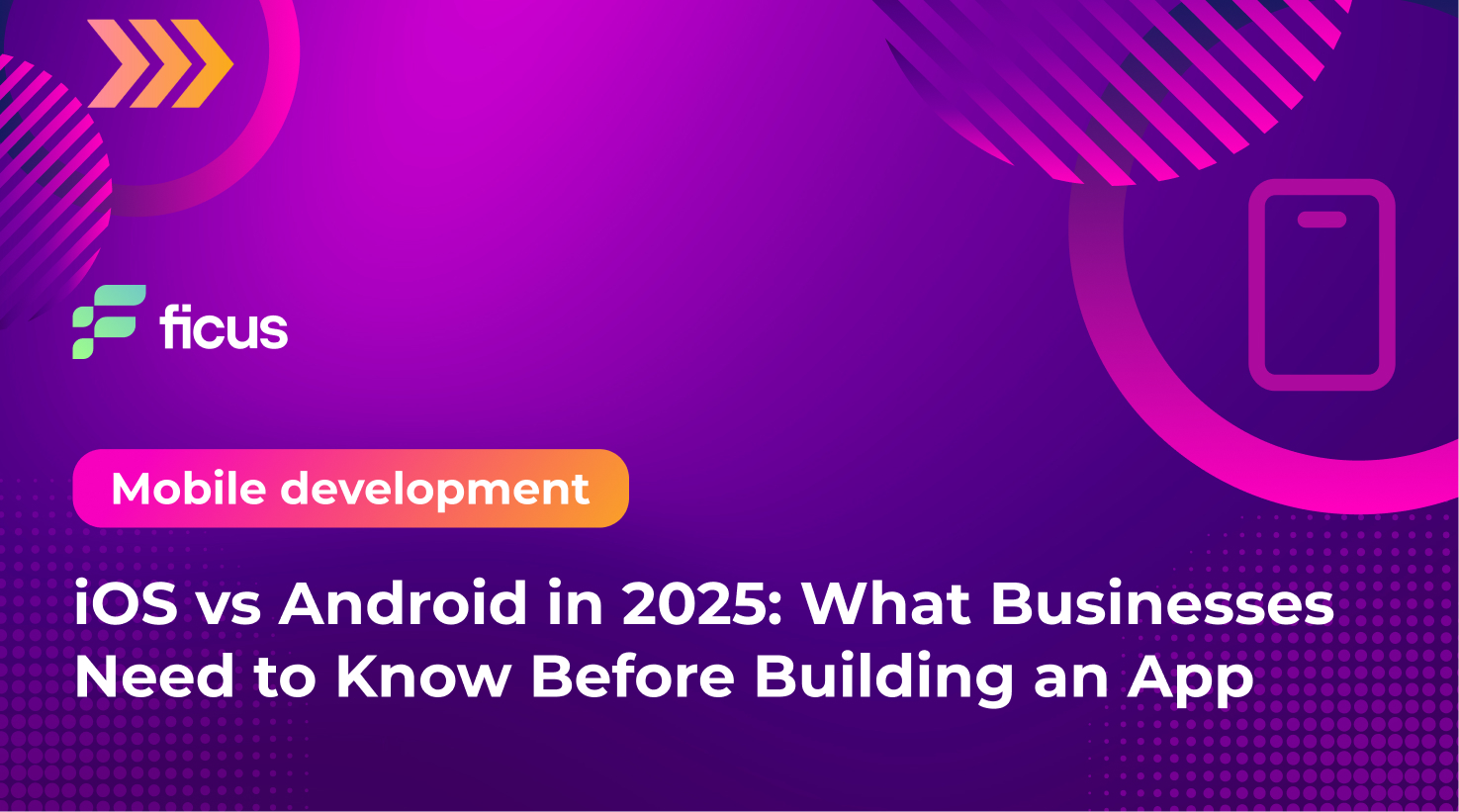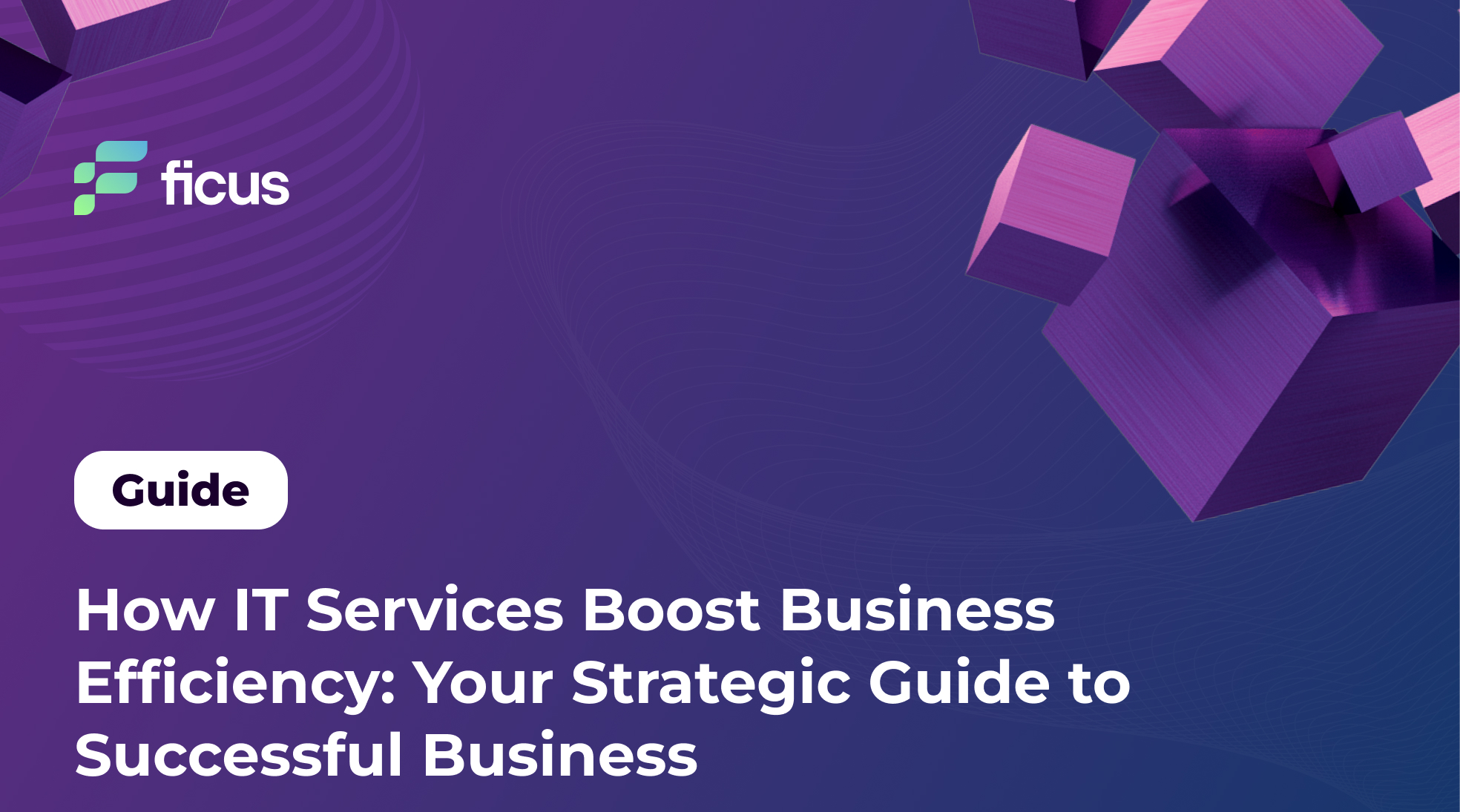Building a dynamic and successful FinTech software development team is a strategic leap into a constantly evolving technology field. With a steady 22% growth rate, the software sector attracts visionary leaders who assemble dedicated teams equipped with skills, experience, and unwavering focus. Imagine a team that navigates the digital landscape without distractions, resulting in higher productivity and faster project completion. In the FinTech industry, where the market value is expected to reach a staggering $324 billion by 2026, the stakes are very high for startups and CTOs looking to stay on the technological wave.
- Fintech software development teams comprise various roles with specific responsibilities.
- Hiring a dedicated team with both hard and soft skills is crucial.
- Ficus Technologies offers Fintech software development teams for project success.
What is the FinTech Software Development Team, and why do you need it?
A FinTech software development team is a complexly organized group of experts with different skills that are crucial to creating a technical product that delivers optimal results. Each team member, with their specialized roles and responsibilities, contributes to creating a FinTech product. Depending on the project’s needs, such teams can be divided into technology, product, or matrix teams. Choosing the right team structure is crucial, according to the specifics of your idea. A FinTech software developer, an important component of such a team, specializes in creating innovative solutions for the financial technology sector, using technologies such as artificial intelligence, blockchain, and the Internet of Things to improve the efficiency and transparency of financial services.

FinTech Software Development Team Roles and Responsibilities
An effective FinTech software development team is made up of experienced professionals, each with specialized roles that are critical to success. Learn the ins and outs of a well-structured FinTech development team, where experienced members work together to achieve project goals and deliver exceptional results.
Project Manager
The project manager is the backbone of the FinTech software development team, carefully building the team to ensure the project is completed on time and within budget. Their tasks cover everything from running meetings and creating schedules to managing the budget and minimizing risks. The specialized role of the project manager is to organize a symphony of tasks to align the team with the defined scope and goals of the project. In fact, they are the driving force behind the successful implementation of the project, guiding the FinTech development team to achieve the set goals.
Business Analyst
The business analyst is an important link between stakeholders and the FinTech development team, assessing IT systems and clarifying roles to better meet business needs. Their role includes developing implementation requirements and collaborating with stakeholders to shape IT plans. The business analyst, who is the backbone of the FinTech software development team, sets up the team’s dynamics, ensuring smooth collaboration and alignment of technical efforts with overall business strategies.
The challenge is not just to build technology that can serve financial institutions, but to turn the industry into a technological industry.
Brett King
Team Lead
A Team Lead is the captain who steers the technical ship of a FinTech software development team. Working at the intersection of leadership and technical prowess, he or she works closely with software development teams to ensure the smooth running of technical activities. By monitoring and evaluating progress, the Team Lead plays a key role in guiding the FinTech development team to achieve their goals, ensuring that the development process is cohesive and efficient.
UX/UI Designer
UX/UI designers are an integral part of the Fintech software development team, shaping the user experience from the beginning of development to the end. User experience designers focus on software behavior, while interface designers create visually appealing layouts. This dynamic duo works in harmony to improve the aesthetics and usability of the product. In a FinTech development team, UX/UI designers bring creativity to the technical landscape, ensuring that user-centered design principles are implemented in every component of the development process.
Software Tester/QA Team
The Quality Assurance Tester is responsible for the functionality and usability of the FinTech software development team. Ensuring that the software is error-free, they thoroughly test new and existing applications, offering valuable feedback for improvement. The tester is the linchpin in pursuing excellence within the FinTech development team by maintaining the highest quality programs that meet customer expectations.
Scrum Master
A Scrum Master is a universal leader in a FinTech development team who upholds the principles of Scrum and ensures smooth teamwork. By facilitating communication, removing obstacles, and fostering a collaborative atmosphere, a Scrum Master is vital to Scrum-based projects. Unlike project managers, scrum masters specialize in the Scrum methodology, which makes them useful for developing agility in a FinTech software development team.
Do you need a software development team?
Contact usEffective Steps for Building a Fintech Software Development Team
Learn the key steps to building a solid FinTech software development team. From sizing your project and structuring your team to conducting in-depth analysis, exploring development approaches, and interviewing candidates, these strategic steps ensure a specialized FinTech development team meets your project goals.
Step 1. Identify project size and complexity
At the initial stage of forming a FinTech Software Development Team, it is necessary to assess the size and complexity of the project. Understanding the scale helps to determine the composition of the team. A minimum team of four specialists may be sufficient for a simplified platform or prototype. Conversely, a complex application with unique features and third-party integrations requires a larger team of specialized experts. Whether it’s desktop development, robotics, gaming, or artificial intelligence, understanding the size and complexity of the project is crucial to building a specialized FinTech development team that will ensure smooth progress and a successful outcome.
Step 2. Structure software engineering team for a project
Another important step in building a skilled FinTech software development team is to organize the team for optimal results strategically. The choice between a technology team of specialists, a product team of generalists, or a hybrid matrix team is crucial. These categories encompass a variety of knowledge, skills, and work emphases. Understanding the nuances between these team structures is vital, as it allows you to anticipate potential issues in managing and overseeing the team proactively. This strategic decision lays the groundwork for building a dynamic and specialized FinTech development team that meets the project’s unique requirements.
Step 3. Allocate budget and set project timelines
In the complex process of forming a FinTech software development team, an individual approach is extremely important. The availability of resources for the project and the timeframe have a significant impact. Budget allocation directly affects specialists’ experience and the team’s overall composition. Analyzing the work estimate and carefully evaluating the software requirements are important steps to prevent project failures and optimize resources. By skillfully managing financial issues and deadlines, you can build a well-trained FinTech development team that will ensure the project’s efficiency, quality, and successful implementation.
Step 4. Explore the software development approaches.
Understanding the nuances between agile and waterfall methodologies is crucial to building a dynamic FinTech software development team. Each approach affects team size, team members, management approach, team synchronization, client engagement, and project focus. Agile teams, typically consisting of 4-10 members, emphasize self-management and coordination, fostering client engagement throughout the transparent process. In contrast, Waterfall teams have no size limitations, adopt top-down management, and involve clients during deliverable presentations. Knowing these differences is crucial to forming a FinTech development team according to the chosen software development methodology.
- Team size
The size of a FinTech development team depends on the chosen methodology. In Agile, teams usually consist of 4-10 members, facilitating flexibility and effective coordination. Conversely, Waterfall teams have no defined size limitations, allowing flexibility but potentially complicating coordination.
- Team members
In an agile FinTech development team, various roles, such as team leader, product owner, project manager, business analysts, developers, designers, testers, and other stakeholders, collaborate to make the project successful. In contrast, a Waterfall team comprises developers, testers, business analysts, and a project manager, emphasizing specialization and hierarchy.
- Management approach
When building an effective FinTech software development team, the chosen management approach is a key factor that affects the team’s dynamics and success. In Agile methodologies, the management approach tends to be self-managing and self-organizing, allowing team members to take responsibility for specific tasks. Such a collaborative and decentralized approach to management provides a more flexible response to challenges. Conversely, in a waterfall organization, a top-down approach to management prevails, with directives cascading down from the top to the bottom. Such a hierarchical structure provides clear directives but can sacrifice the adaptability inherent in agile methodologies.
- Team synchronization
Achieving optimal team synchronization is vital for the smooth operation of a FinTech software development team. In an Agile environment characterized by small teams, a high degree of team synchronization is maintained. This close coordination ensures that team members are well-aligned, contributing to a more efficient workflow. In contrast, synchronization can be difficult in large Waterfall teams due to the vertical hierarchy of tasks and responsibilities.
- Customer Involvement
Continuous customer engagement is a hallmark of successful FinTech software development teams. In agile methodologies, clients are actively involved throughout the entire project lifecycle, promoting transparency and aligning development with client expectations. This iterative and collaborative customer involvement provides real-time feedback, ensuring that the final product effectively meets user needs. Conversely, in a waterfall approach, customer involvement is more limited and usually occurs during the product presentation. While this approach provides a structured involvement model, it may lack the adaptability and agility of continuous customer involvement inherent in Agile methodologies.
- Project focus
Agile teams focus on one project at a time, ensuring undivided attention and focused efforts. In contrast, Waterfall teams may juggle multiple projects simultaneously, potentially affecting focus and efficiency. Awareness of these differences is essential to adapt a FinTech software development team to the chosen approach.
Step 5. Conduct analysis and define the size of a team
In the careful process of building a skilled FinTech software development team, a critical step is to conduct a thorough analysis to accurately determine the team size and individual responsibilities. A clear understanding of the project’s nature, scope, resources, timeline, and complexity is essential. This analysis serves as a compass to determine the optimal size of the FinTech development team. By aligning expectations with project complexities, this strategic approach ensures harmonious and effective collaboration, where each team member’s specialized responsibilities contribute to the overall success of the software development.
Step 6. Scan online platforms and look for referrals
Finding the perfect FinTech software development team involves strategically navigating online platforms and seeking out referrals. Starting this process involves organizing your contact list and leveraging your existing industry connections for valuable referrals. Additionally, specialized professional platforms such as Clutch, GoodFirms, LinkedIn, Upwork, and Glassdoor are valuable resources for finding potential team members. Searching on these platforms expands the talent pool and provides information and recommendations that can help you carefully select a FinTech development team that meets your project’s requirements.
Step 7. Check out CVs and portfolios
Hiring a FinTech software development team involves thoroughly analyzing resumes and portfolios. Creating an accurate job description with detailed specifications guides the talent search by emphasizing achievements, employment history, stated expertise, and employer references. Researching candidates’ case studies and previous projects becomes paramount to ensure their experience perfectly fits your project’s current needs. Such a thorough assessment ensures that you select individuals who possess the necessary skills for your FinTech development team and have a track record of success in similar environments.
Step 8. Interview candidates
In the thorough process of building a skilled FinTech software development team, the interview stage is of paramount importance. This stage addresses key aspects such as assessing the candidates’ previous experience, understanding their familiarity with the technology stack, evaluating their attitude towards work, determining their collaboration skills, and thoroughly testing both soft and hard skills. The interview is an important way to delve into the candidate’s work style, experience, and future workflow. A thorough hiring process ensures that you build a FinTech development team with the best potential, contributing to a friendly work environment and reducing staff turnover.
Step 9. Prepare a contract
Preparing a contract is an integral step in the final stage of forming a qualified FinTech software development team. A comprehensive contract should cover the key goals, responsibilities, and tasks expected of the candidate. This legally binding document ensures that the tasks will be completed according to the plan and provides an opportunity to go to court if the duties are not fulfilled. In addition, defining the terms of termination gives the organization the right to terminate the contract with prior notice. Such careful legal preparation is crucial to ensure harmonious cooperation within the FinTech development team, alignment with budgetary constraints, and project requirements for a successful partnership.
Step 10. Consider software development outsourcing or staff augmentation
At the last stage of building a skilled FinTech development team, it is important to consider outsourcing or expanding your staff. Choosing these approaches allows you to delegate the implementation of your software concept to a team of experienced experts, which is ideal for complex, long-term tasks. Software development experts can easily expand your engineering team to tackle new projects, software upgrades, or application redesigns. While the vendor helps with organizational issues, you retain control over administration. This strategic approach provides flexibility and scalability in building an effective FinTech development team to meet project needs.
Where to look for a Fintech development team
Finding a skilled Fintech software development team involves exploring different areas of the software development landscape.
- Outsourcing platforms:
- Global reach: Outsourcing without geographical restrictions by choosing suppliers worldwide based on pricing and terms of cooperation.
- Online search: Use search engines to find a variety of software providers around the world.
- Specialized directories:
- Independent evaluation: Check out specialized directories like Clutch and GoodFirms that offer company profiles on independent sites.
- Comprehensive information: Access detailed information, client testimonials, and project examples to help you decide.
- Freelancer websites:
- Individual professionals: Explore freelance platforms like Toptal and Upwork to find individual specialists.
- Outsourcing companies: Find representatives of outsourcing companies that promote their services on these platforms.
- Business forums and Q&A platforms:
- Exchange of experience: Connect on business forums like Reddit and Quora, where software development professionals share their experiences.
- Customized requests: Ask specific questions or find relevant discussions to find potential partners.
- Networking platforms:
- LinkedIn: Use LinkedIn as a leading networking platform to connect with potential teams and learn from their experiences.
In this wide range of possibilities, the challenge is to choose the best provider that will ensure the success of your FinTech development team.
Final words
So, the path to building a successful FinTech development team involves careful planning, strategic recruitment, and the use of online resources. Understanding the complexities of building a specialized FinTech software development team is an important step for startups and CTOs looking to capitalize on the rapid growth of the $324 billion FinTech industry by creating innovative solutions.
At Ficus Technologies, we understand the importance of assembling the right FinTech development team. We develop secure features, integrate blockchain for data protection, and implement artificial intelligence algorithms to obtain personalized financial information. With our experience, we will help you unlock the potential of your business by providing the knowledge you need to build a successful FinTech software development team.
Fostering effective team communication involves creating an open and inclusive environment where team members feel comfortable expressing ideas and concerns. Encourage regular team meetings to discuss progress, challenges, and goals. Utilize collaboration tools to share information seamlessly and make sure feedback channels are easily accessible. Implement active listening to understand different perspectives and promote transparency in decision-making processes. Establish clear communication protocols and expectations. Foster a culture that values and respects the contributions of each team member, creating a sense of psychological safety. Encouraging team-building activities can also strengthen interpersonal bonds, which will ultimately increase overall communication effectiveness.
Ensuring security and compliance in FinTech development requires a multifaceted approach. Start by conducting a thorough risk assessment to identify potential vulnerabilities. Implement strong encryption protocols to protect sensitive data and follow industry-standard security practices. Stay up-to-date with GDPR or PCI DSS regulations that apply to financial services. Regularly update security measures to address new threats. Conduct regular audits and assessments to ensure compliance with industry standards and legal requirements. Foster a security culture within your development team through training and awareness programs. Collaborate with cybersecurity experts and use secure coding practices to mitigate risks effectively.









Great article! It was interesting to read about the emphasis on hiring individuals with a strong finance and technology background and the importance of fostering a collaborative and innovative work environment. It is a helpful resource for establishing a successful fintech team.